Abstract
In this comparative study, we compensated for many of the known variables that influence children's growth and development by selecting two groups of 4-5-year-old Yaqui children who reside in the Yaqui Valley of northwestern Mexico. These children share similar genetic backgrounds, diets, water mineral contents, cultural patterns, and social behaviors. The major difference was their exposure to pesticides. Pesticides have been applied to the agricultural area of the valley since the late 1940s. In 1990, high levels of multiple pesticides were found in the cord blood of newborns and in breast milk. Building on anthropological methods for rapid rural appraisal of problems within the environment, a Rapid Assessment Tool for Preschool Children (RATPC) was developed to measure growth and development. The children of the agrarian region were compared to children living in the foothills, where pesticide use is avoided. The RATPC measured varied aspects of physical growth and abilities to perform, or function in, normal childhood activities. No differences were found in growth patterns. Functionally, the exposed children demonstrated decreases in stamina, gross and fine eye-hand coordination, 30-minute memory, and the ability to draw a person. The RATPC also pointed out areas in which more in-depth research on the toxicology of pesticides would be valuable.
Full text
PDF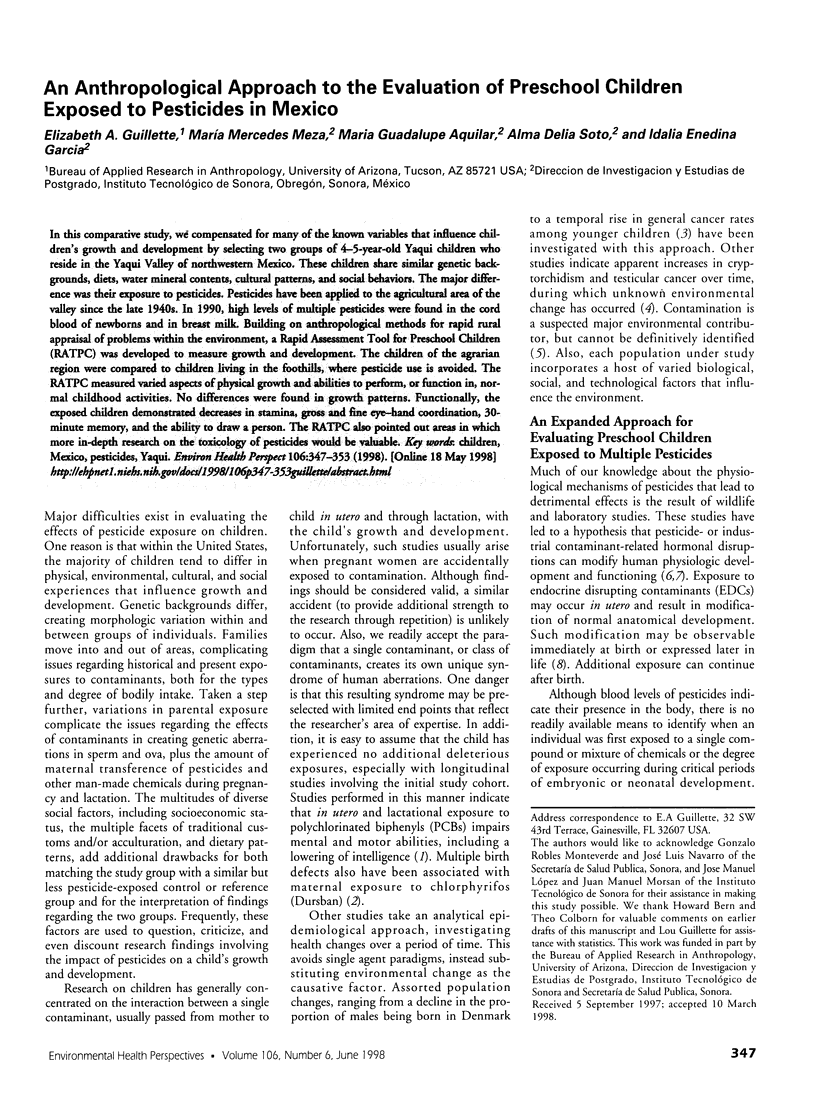
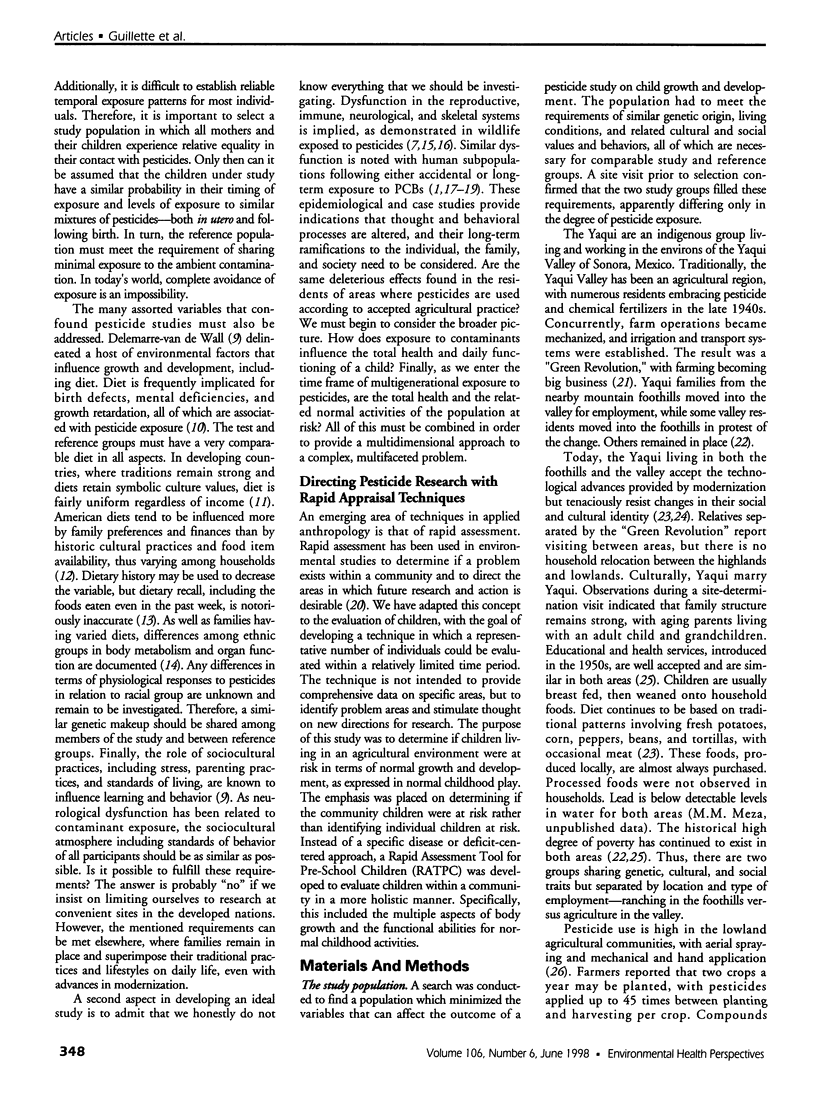
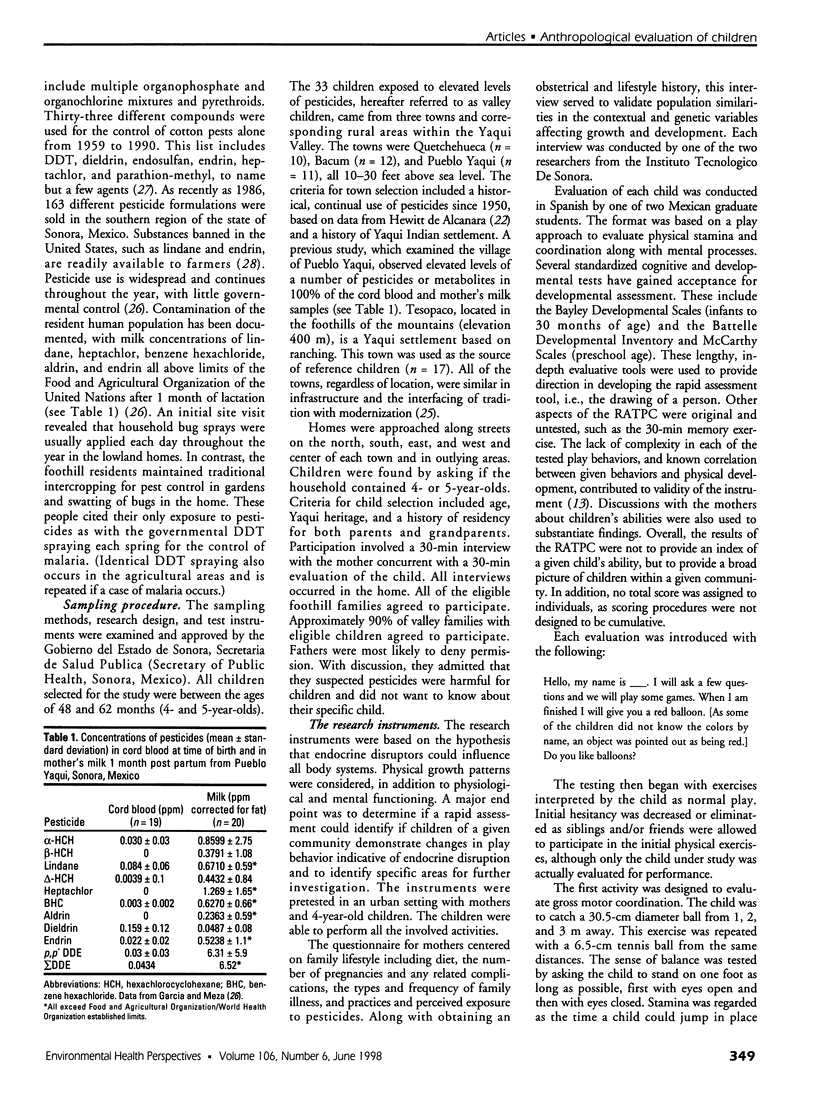
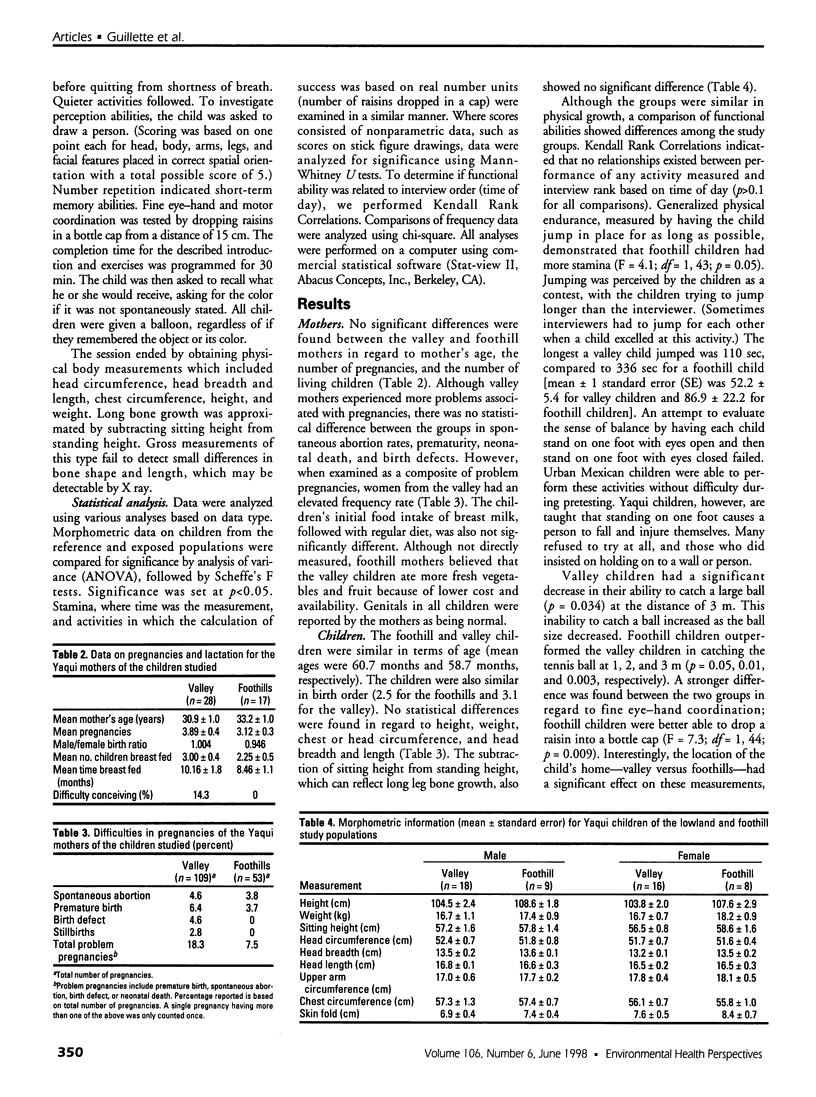
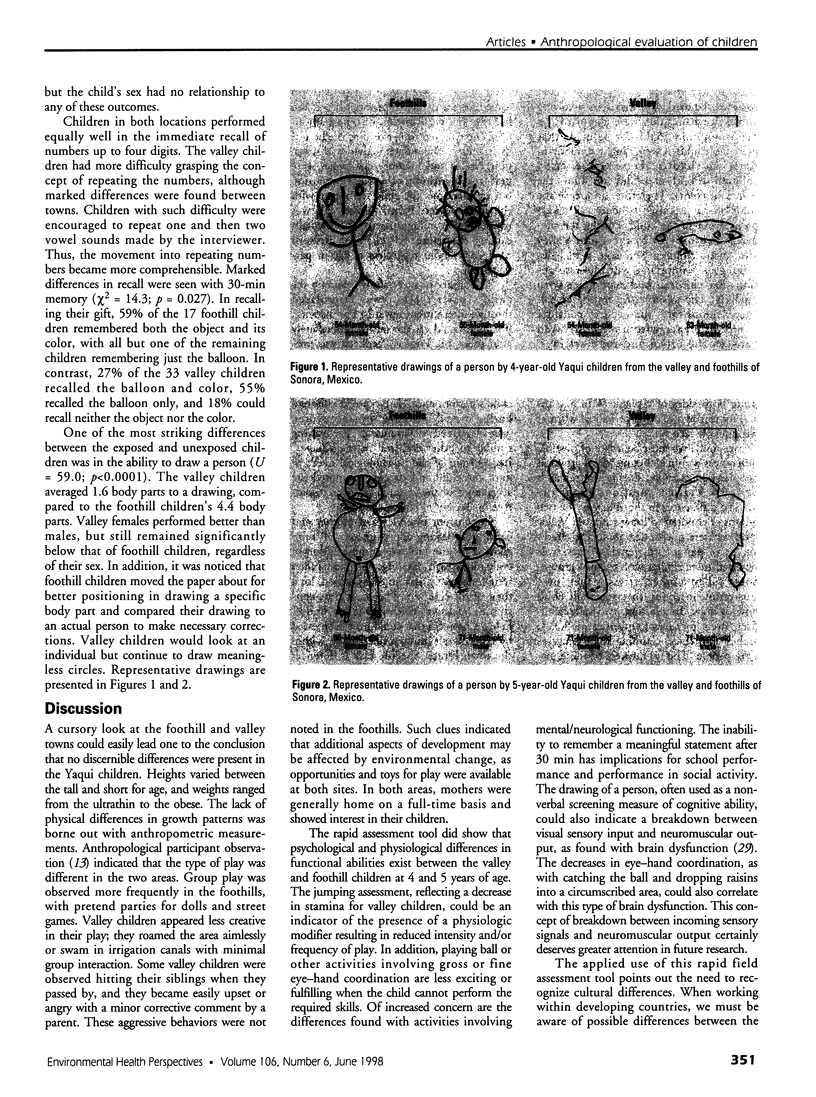
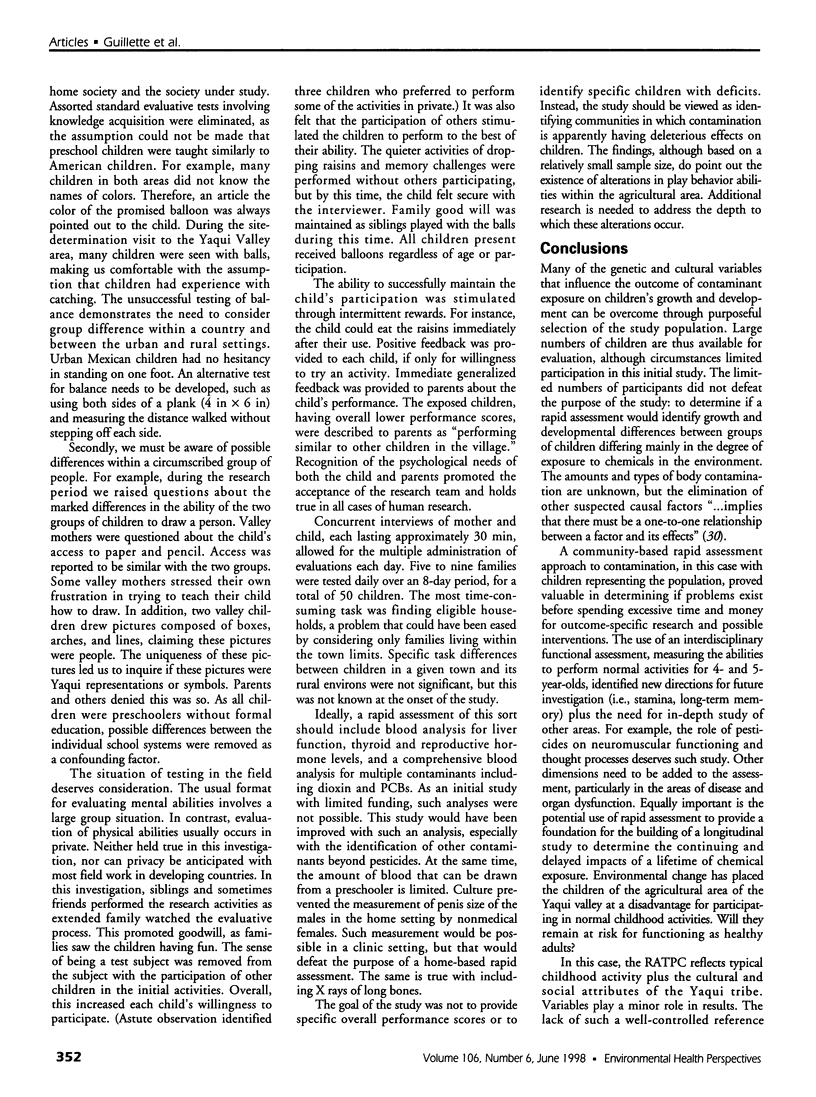
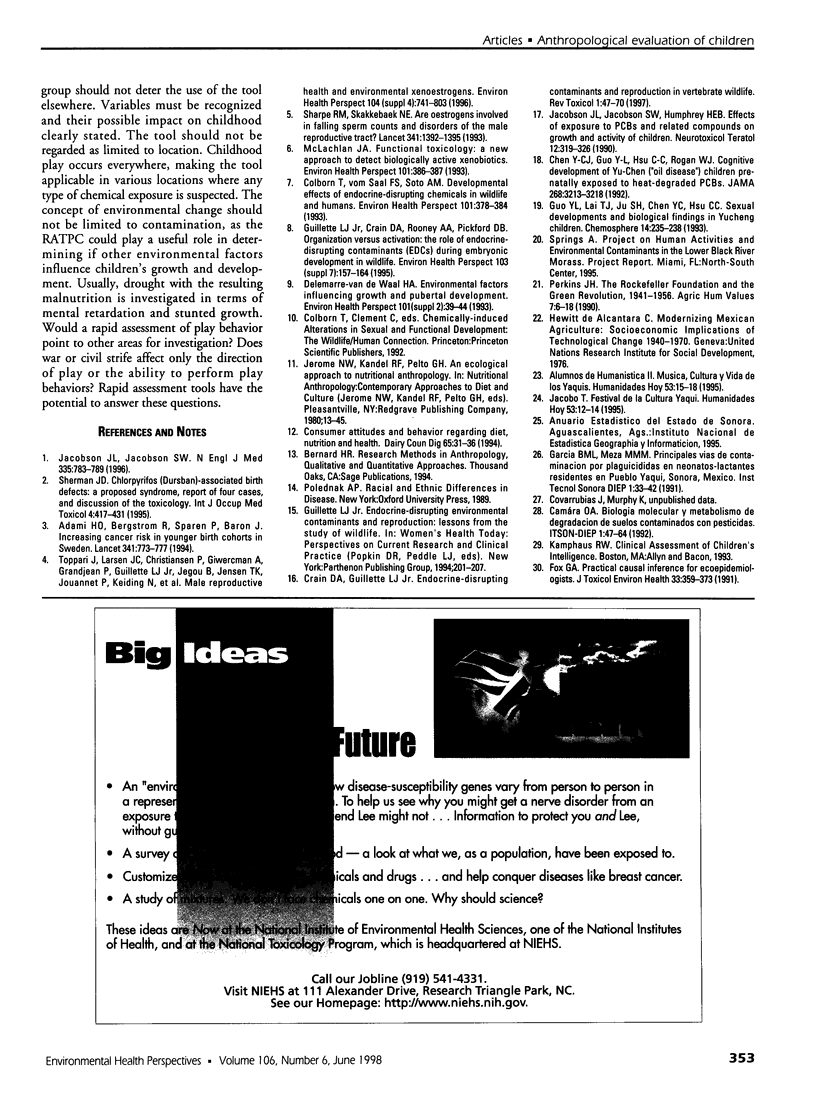
Images in this article
Selected References
These references are in PubMed. This may not be the complete list of references from this article.
- Adami H. O., Bergström R., Sparén P., Baron J. Increasing cancer risk in younger birth cohorts in Sweden. Lancet. 1993 Mar 27;341(8848):773–777. doi: 10.1016/0140-6736(93)90557-w. [DOI] [PubMed] [Google Scholar]
- Chen Y. C., Guo Y. L., Hsu C. C., Rogan W. J. Cognitive development of Yu-Cheng ("oil disease") children prenatally exposed to heat-degraded PCBs. JAMA. 1992 Dec 9;268(22):3213–3218. [PubMed] [Google Scholar]
- Colborn T., vom Saal F. S., Soto A. M. Developmental effects of endocrine-disrupting chemicals in wildlife and humans. Environ Health Perspect. 1993 Oct;101(5):378–384. doi: 10.1289/ehp.93101378. [DOI] [PMC free article] [PubMed] [Google Scholar]
- Delemarre-van de Waal H. A. Environmental factors influencing growth and pubertal development. Environ Health Perspect. 1993 Jul;101 (Suppl 2):39–44. doi: 10.1289/ehp.93101s239. [DOI] [PMC free article] [PubMed] [Google Scholar]
- Fox G. A. Practical causal inference for ecoepidemiologists. J Toxicol Environ Health. 1991 Aug;33(4):359–373. doi: 10.1080/15287399109531535. [DOI] [PubMed] [Google Scholar]
- Guillette L. J., Jr, Crain D. A., Rooney A. A., Pickford D. B. Organization versus activation: the role of endocrine-disrupting contaminants (EDCs) during embryonic development in wildlife. Environ Health Perspect. 1995 Oct;103 (Suppl 7):157–164. doi: 10.1289/ehp.95103s7157. [DOI] [PMC free article] [PubMed] [Google Scholar]
- Jacobson J. L., Jacobson S. W., Humphrey H. E. Effects of exposure to PCBs and related compounds on growth and activity in children. Neurotoxicol Teratol. 1990 Jul-Aug;12(4):319–326. doi: 10.1016/0892-0362(90)90050-m. [DOI] [PubMed] [Google Scholar]
- Jacobson J. L., Jacobson S. W. Intellectual impairment in children exposed to polychlorinated biphenyls in utero. N Engl J Med. 1996 Sep 12;335(11):783–789. doi: 10.1056/NEJM199609123351104. [DOI] [PubMed] [Google Scholar]
- McLachlan J. A. Functional toxicology: a new approach to detect biologically active xenobiotics. Environ Health Perspect. 1993 Oct;101(5):386–387. doi: 10.1289/ehp.93101386. [DOI] [PMC free article] [PubMed] [Google Scholar]
- Sharpe R. M., Skakkebaek N. E. Are oestrogens involved in falling sperm counts and disorders of the male reproductive tract? Lancet. 1993 May 29;341(8857):1392–1395. doi: 10.1016/0140-6736(93)90953-e. [DOI] [PubMed] [Google Scholar]
- Toppari J., Larsen J. C., Christiansen P., Giwercman A., Grandjean P., Guillette L. J., Jr, Jégou B., Jensen T. K., Jouannet P., Keiding N. Male reproductive health and environmental xenoestrogens. Environ Health Perspect. 1996 Aug;104 (Suppl 4):741–803. doi: 10.1289/ehp.96104s4741. [DOI] [PMC free article] [PubMed] [Google Scholar]




